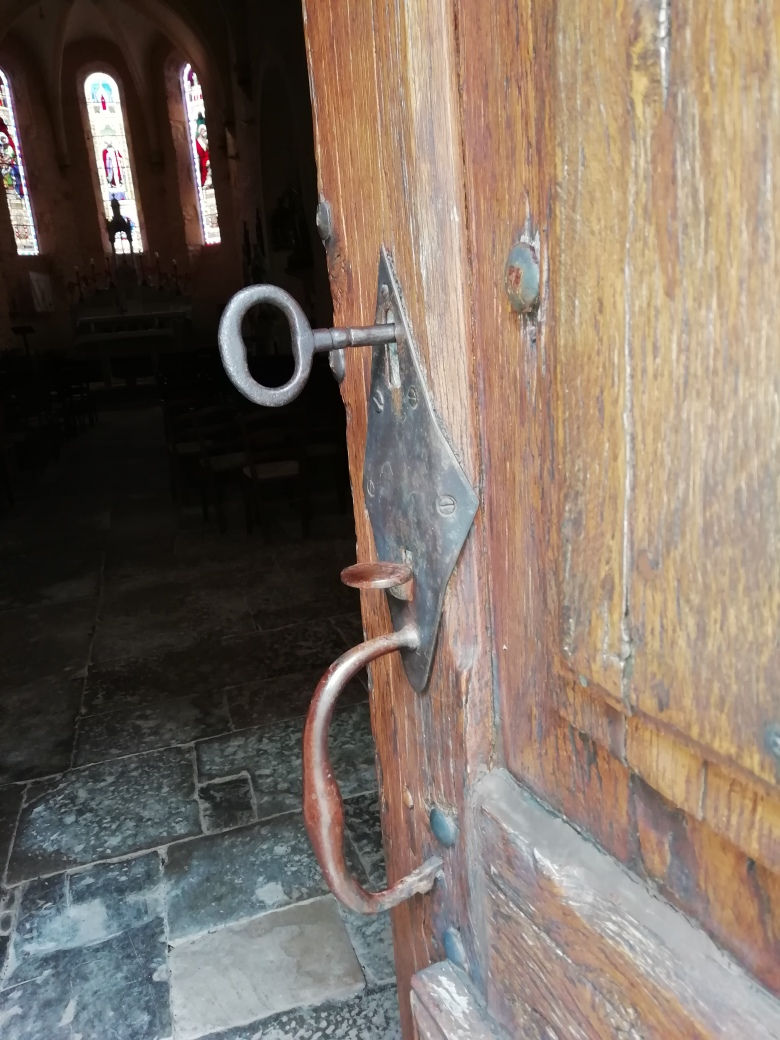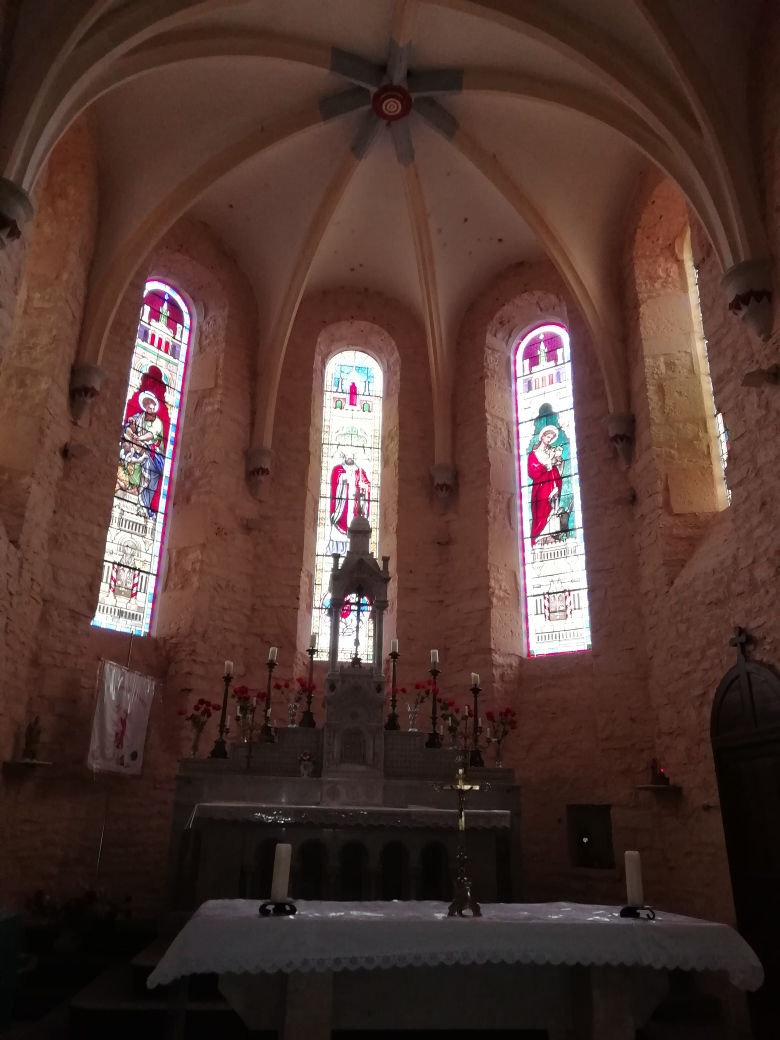
a big thank-you to Roy for the translation
TAKE A JOURNEY THROUGH TIME
A walk through the beautiful village of Loze allows you to share the memories and traces of the daily life of our elders while visiting the heart of the community. Take to our streets and go down to the wash house - come and savour the simplicity and serenity of the place whilst going back in time.

11
D
2
3
4
5
6
7
8

Depart : From the village square:
1 - THE PUBLIC WEIGHBRIDGE
Installed at the beginning of the 19th century, the public weighbridge, commonly called "the scale", was used to weigh animals destined for sale.



The French weighing instrument manufacturing company TRAYVOU-BERANGER was founded in 1827 and had a reputation that went far beyond the French borders. It was bought in the 80's by the TAPIE group and closed definitively its doors in 1990.

2 - THE FOUNTAIN
Until 1910, the inhabitants of the village were only supplied with water by the Saint-Jean fountain below. Watering men and cattle, it was also used for washing clothes and sheep's wool as well as for soaking barrels. Drinking water was scarce and the wells of the houses were insufficient for running water. The fountain was used for a little over 50 years until the village was connected to the Puylagarde pumping station in 1962.
3 - THE HOUSE OF GASTON AND ITS PASSAGEWAY
In front of the well, pass between the two houses and through the passageway connecting them...
... this will lead you to a courtyard and a bread oven.



4 - THE BREAD OVENS
Every rural house had its oven. It was not used every day, but the bread was baked once a week or once every fortnight. The oven could be used for special occasions: for baking pastries, meat, pasta, etc. or simply for drying fruit, grapes or smoking meat. The oven can be presented in two ways: - incorporated in the wall of the house as an individual oven or in a separate building, which indicates that it can belong to several families; it is then called the Bakehouse or Bakery.



Oven interior
Laundry : No modern day washing machines! The embers from the oven were preserved and turned into ashes for washing. After cooking, the embers were put in the ashtray or in a damper to finish burning in a closed environment. In this way, they kept the maximum of their active ingredients.
For the laundry, the women soaked the linen in cold or lukewarm water. It was then placed in a container equipped with a drain at the base, then covered with a large canvas on which a bed of ashes was laid. Boiling water was then poured over the ashes - as the water flowed through, it was loaded with active bleaching agents that dissolved the fats and emulsified the dirt.
5 - THE CHURCH OF SAINT MARTIN
Perched high above the Bonnette valley, the church of Saint Martin sits imposing and proud.
The first mention of its existence dates back to 1112. During the Hundred Years' War, many buildings were destroyed including the church of Loze. It was rebuilt in 1461 and underwent many alterations. The bell-tower and its machicolations are the only remains of this period. In 1870, the nave was extended into a five-sided choir, the two side chapels were created as well as the vault and the tribune, and the outer walls were raised.




















The interior of the church, carefully restored at the end of the last century, is very sober but struck by its great luminosity. Some statues, including that of Emilie de Rodat, decorate the nave and the side chapels testifying to the faith of the parishioners.

EMILIE DE RODAT : Born near Rodez and died in Villefranche de Rouergue in 1852, she was the founder of the Congregation of the Sisters of the Holy Family, dedicated to the education of poor girls and the care of the sick. Very popular throughout the region, her statue is of particular value to the people of Loze. In fact, when Emilie was beatified in 1940 in the Vatican, two miracles were attributed to her, one of which was the healing of a village inhabitant suffering from an incurable cancer.
6 - A MEDIEVAL HOUSE
Going around the church, attached to the rock face there is a medieval house that has survived through the centuries to become a treasure of Loze past and present.



7 - THE WAR MEMORIAL
Recently built (1982), the monument to the fallen with its cypress on the village square on the site of the old cemetery. Facing the valley, its broken arch is meant to be a symbol of lives destroyed by war.





 |  |  |  |
|---|---|---|---|
 |  |  |

8 - THE FOUNTAIN SAINT JEAN
On the road behind the war memorial, you will cross on your right, a downhill and bumpy path (be careful! At the end of it, the Saint-Jean fountain. We say "the wash-house".
The water has always come out of the fountain and has supplied drinking water to the village and the animals until the 1960s. Some people say that this water cured children who suffered from rickets and other ailments.
The covered wash-house dates from 1862.
The drinking trough on the right is still used for the animals, the farmers coming to fill their tanks to deliver to the pastures in the surrounding areas. With a bit of luck, if you look into the water, you may see one or two salamanders...
You can now go back up towards the village (the community bar is open on Sunday afternoon) or go down towards the Bonnette valley where caves, shady areas, hiking trails and goatherds are waiting for you. Enjoy your visit !